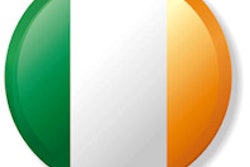
The metadata stored with images on PACS includes a wealth of potentially useful information that could be utilized for quality control purposes. Data mining techniques can unlock its potential, Portuguese researchers have found.
Using open-source software, a team from the University of Aveiro recently mined the PACS at two different institutions to assess variation in x-ray exposures in computed radiography (CR) mammography studies. They found that radiation exposure values varied significantly between the two hospitals.
"The developed exposure assessment methodology shows that the efficient mining of DICOM metadata, stored over dispersed PACS archives of radiology departments, is possible and may definitely contribute to quality control and improvement initiatives at radiology departments, namely in radiation protection and protocol optimization scope," said Milton Santos of the university's School of Health Sciences. He presented the group's findings during a session at ECR 2014 in Vienna.
Important image data such as image processing parameters, exposure index, patient dose, and geometric information are generated by imaging modalities and transferred to PACS as DICOM metadata, Santos said.
Thanks to technological advances in radiology and IT, it's now possible to use tools "that enable the collection and analysis of information related to medical imaging, namely productivity and professional performance analysis software or within x-ray population exposure programs," Santos said.
"The development of strategies for information access, analysis and storage, independently of equipment manufacturers and information systems still pose key challenges that need to be addressed," he said.
Dicoogle
In an attempt to analyze variation in x-ray exposure in CR mammography studies, the Portugese team sought to use the Dicoogle open-source medical image repository software to extract DICOM metadata from several PACS. Enabling flexible queries of DICOM metadata, Dicoogle can perform hierarchical content indexing of the DICOM metadata by patient, study, series, or image. In addition, it can also yield text-content indexing based on a free text query, according to Santos.
After Dicoogle user validation, DICOM metadata stored in two PACS archives were extracted and included modality, study date, study description, sensitivity, and DICOM attributes (acquisition device processing description). Both institutions have a CR mammography system (Fujjfilm Medical Systems). A higher sensitivity value (S-value) on these images is associated with a lower detector exposure to radiation.
The researchers then utilized descriptive statistical tests to characterize the average, median, and standard deviation of S-values during the study period. A Kruskal-Wallis statistical test was employed to characterize exposure variation patterns for both intrasite and intersite assessments.
The indexing process collected data relating to 351,248 images (56,496 from institution A and 294,752 from institution B) from 210,582 CR studies (26,614 from institution A and 183,968 from institution B) and 69,041 patients (16,382 from institution A and 52,659 from institution B). It then assembled 8,087 images from 2,047 mammographic studies belonging to 1,757 patients.
Significant variation
Analysis showed a high standard deviation at institution A for the sensitivity values, which were much influenced by the minimum and maximum sensitivity values identified in the sample, Santos said.
"Very low sensitivity values reflecting a hyperexposed radiation detector were observed, and very high sensitivity values reflecting a hypoexposed radiation detector were observed," he said.
The results suggested a higher radiation exposure at institution A, Santos said. Further analysis showed a high number of images with an S-value lower than the median during 2009 and 2010, reflecting a sharp increase in radiation exposure, according to the researchers. A decrease was seen, however, during 2011.
As for institution B, analysis of sensitivity values demonstrated a reduction of detector radiation exposure over time, he said. The variation in exposure values between institution A and B was statistically significant (p < 0.001).
The use of DICOM data mining tools in a hospital environment can result in gathering important data for professional practice improvement, Santos concluded.



















